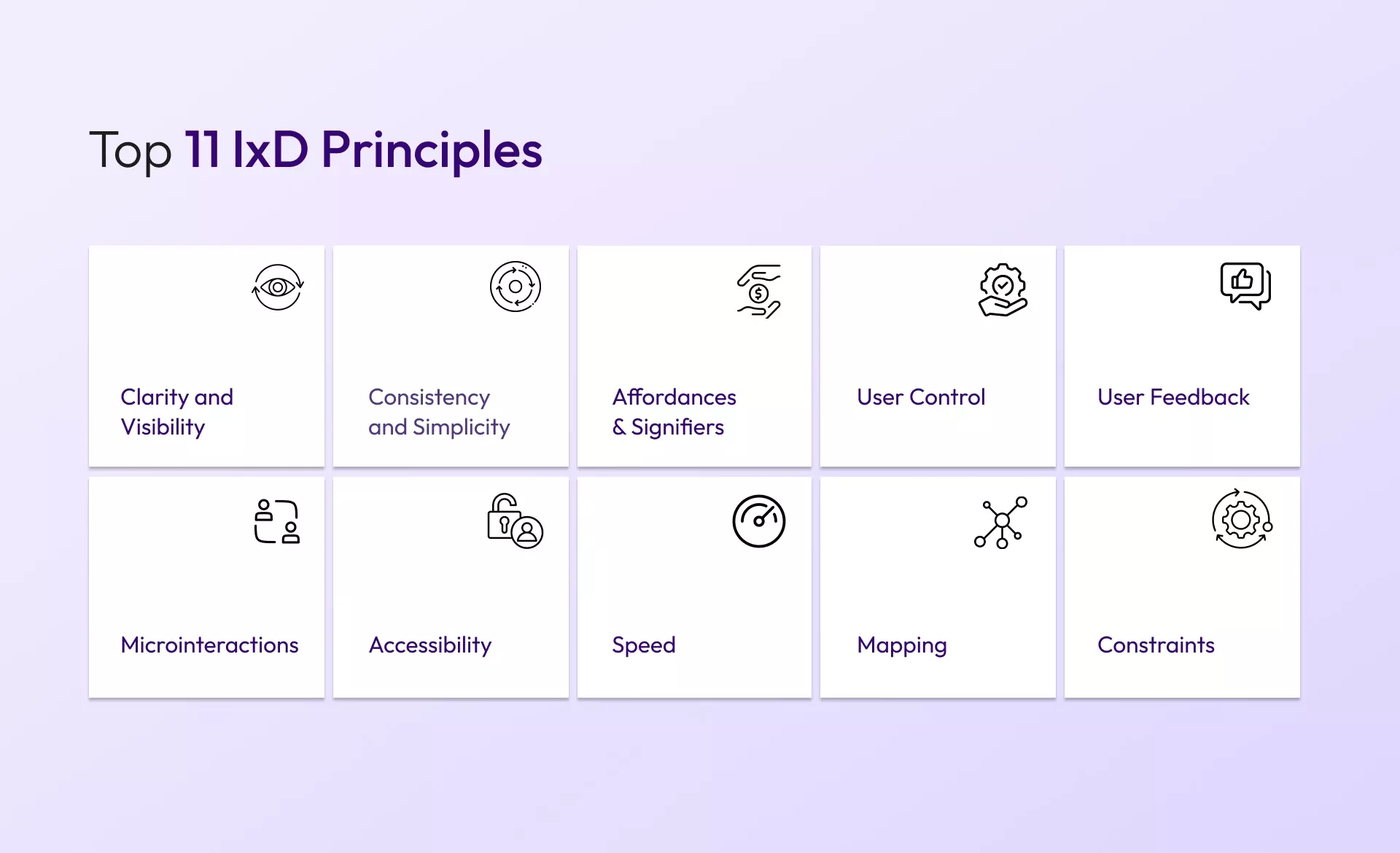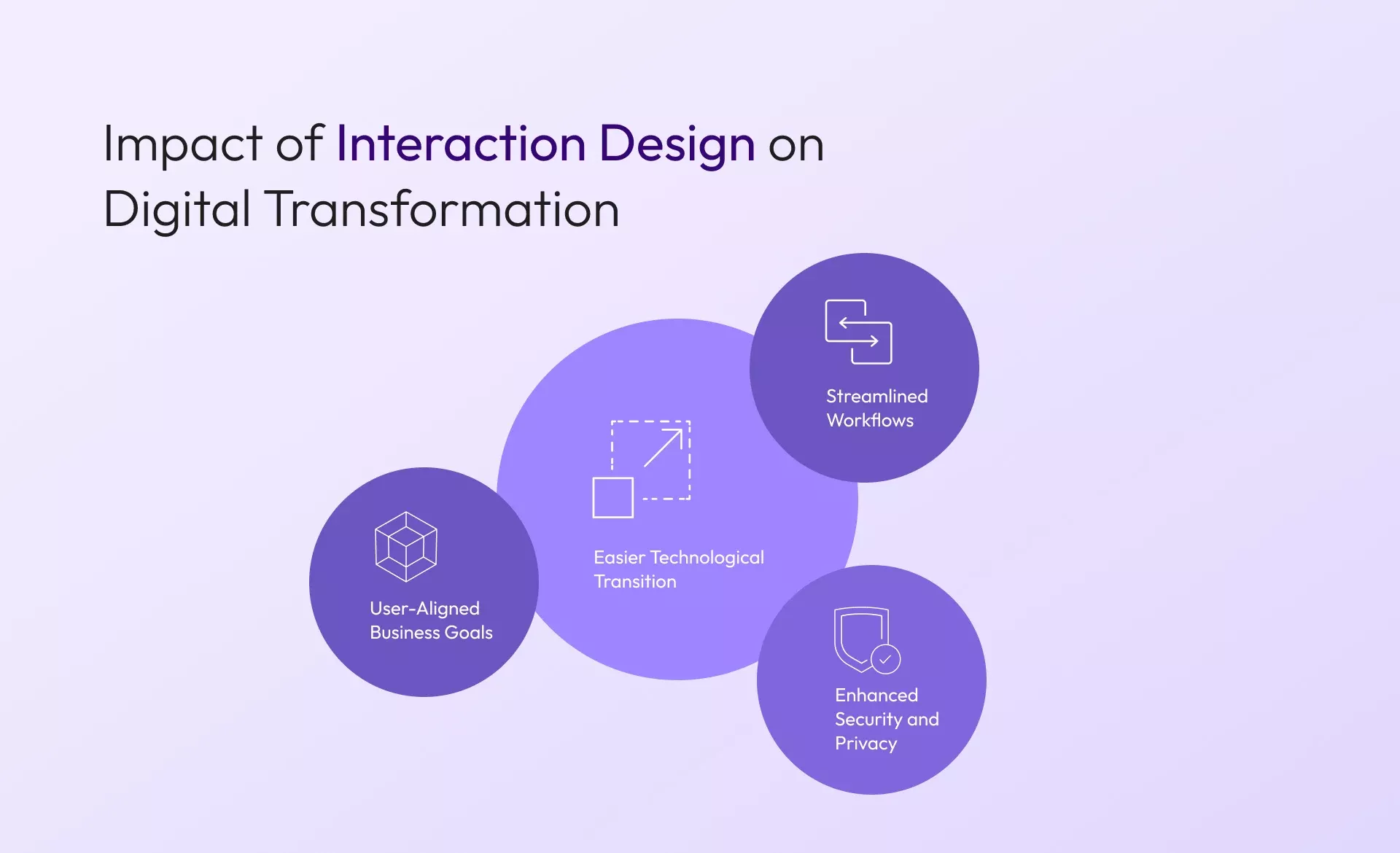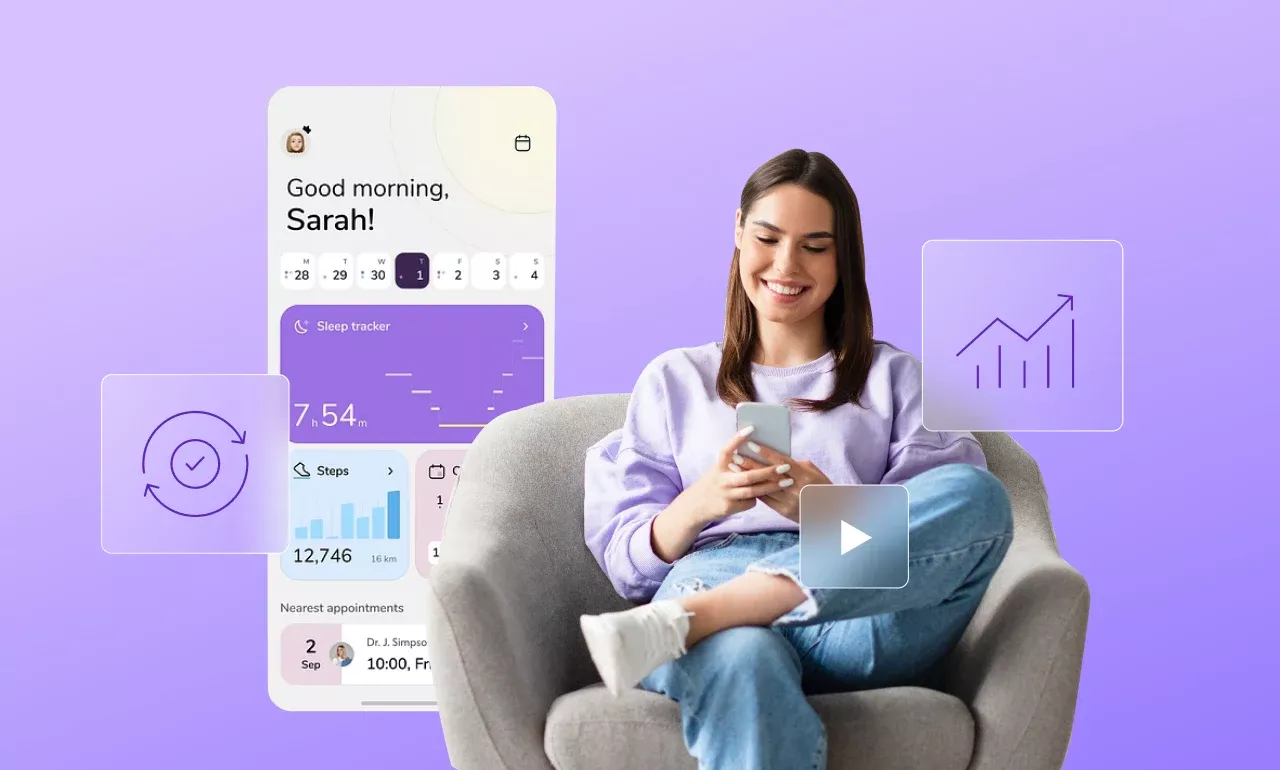The Power of Data Visualization Using Tableau
Top 11 Interaction Design Principles for Engaging Digital Experiences
The best digital experiences feel almost invisible, so intuitive that users barely notice how seamlessly they move through an interface. Behind the scenes, this effortlessness is backed by a science encompassing interaction design principles.
As enterprises invest heavily in user experience, interaction design has become a make-or-break factor in digital success. It is critical in shaping customer engagement, brand perception, and, ultimately, business success. A well-designed interface doesn’t just enhance usability; it builds trust, drives conversions, and strengthens long-term user relationships.
Interaction design focuses on how users interact with digital products, ensuring interfaces are intuitive, responsive, and friction-free. By leveraging strategic UI elements, such as microinteractions, animations, and real-time feedback, businesses can create unforgettable experiences. Following these principles decides the difference between good and bad interaction design (IxD).
So, what does it take to design interactions that captivate and convert?
Find out here.
11 Effective Principles of Interaction Design for Digital Excellence
A seamless, intuitive, and visually compelling design can turn casual visitors into loyal users. Here’s a breakdown of the top interaction design principles that will help you create engaging digital experiences that captivate and convert.

Clarity and Visibility
Prioritizing visibility ensures that essential features are readily available without overwhelming users with unnecessary information. It is one of the most important Norman design principles.
If users cannot see an option or function, they are unlikely to use it. Confusing interfaces lead to frustration and high bounce rates. Brands can ensure clarity on their digital platforms by:
- Using a clear interface layout with a strong visual hierarchy.
- Maintaining consistent navigation elements across all pages.
- Implementing progressive disclosure to show options only when needed.
- Highlighting key functions prominently based on user priorities.
Consistency and Simplicity
A cluttered interface overwhelms users and hampers navigation. A simple and consistent design language across digital platforms enhances usability, reducing the cognitive load for users by ensuring similar actions yield similar results.
This can be done by:
- Prioritizing essential features and removing unnecessary elements.
- Using clear, concise language in labels and instructions.
- Maintaining a minimalistic, distraction-free layout.
- Standardizing UI patterns, typography, and color schemes to create harmony.
- Using the same interaction styles across all screens for a seamless multi-device experience.
- Ensuring platform-wide consistency with uniform button behaviors and navigation structures to prevent confusion.
Affordances & Signifiers
Affordance is one of the top interaction design principles in UX. It refers to designing elements in a way that clearly indicates how they should be used. This helps users understand interactions intuitively without additional instructions. A well-designed UI prevents confusion by:
- Using clear visual cues like button shapes and colors for draggable or swipeable elements to signify clickability and guide user actions. For example, use an envelope icon for email.
- Differentiating links with underlines or color variations.
- Designing form fields that clearly indicate input requirements to prevent errors.
User Control
People like to feel in charge of their digital experience, with the ability to correct mistakes and explore options freely. The opposite of this can lead to disengagement, which can be prevented by:
- Providing undo, redo, back, and cancel options to prevent irreversible mistakes.
- Allowing customization where possible, like theme or layout choices for personalization.
- Offering clear navigation paths with intuitive menu structures to enhance usability.
Flexibility
A flexible interface allows users to customize their experience based on their needs and preferences, improving usability for diverse audiences. Adapting to user preferences requires:
- Offering customization options (e.g., adjustable font sizes, themes).
- Ensuring responsive design for seamless multi-device access.
- Providing alternative input methods (e.g., touch gestures, voice commands).
- Designing modular components that users can rearrange or hide.
User Feedback
The primary goal of interaction design principles is to always evolve with user needs. Feedback informs users about the outcomes of their interactions, reducing uncertainty and increasing confidence in the system. Businesses can implement effective feedback mechanisms by:
- Providing visual cues like button color changes, progress indicators, or animations
- Using sound effects or haptic feedback for interactions to reinforce user actions.
- Displaying confirmation messages for actions taken.
Microinteractions
Small, thoughtful animations or sound effects can make interactions feel more dynamic and enjoyable. Microinteractions are one of the user interaction design principles that enhance the user experience creation process by:
- Providing instant feedback for small actions, like liking a post or submitting a form
- Adding personality and character to UI elements, making interactions feel lively
- Guiding users subtly without disrupting their flow, ensuring a smooth journey
Accessibility
An inclusive design ensures that all users, regardless of abilities, can navigate your digital product. Make your interface accessible by:
- Using sufficient color contrast for readability, aiding visually impaired users
- Supporting keyboard navigation and screen readers for an inclusive experience
- Designing touch-friendly elements for mobile users to ensure effortless interaction
Speed
No one likes waiting for a slow interface. Speed is one of the principles of interaction design that is critical to maintaining engagement. Optimize performance by:
- Reducing load times with efficient coding and lightweight assets for quick responsiveness
- Minimizing unnecessary animations or transitions that could slow down interactions
- Simplifying workflows to remove extra steps and reduce friction in user journeys
Mapping
Mapping refers to the logical placement of controls relative to their actions, making interactions more intuitive for users. This can be done by:
- Aligning controls with their corresponding functions (e.g., volume up/down buttons).
- Designing intuitive navigation and placement of elements.
- Using real-world metaphors to enhance user comprehension.
Constraints
Constraints help limit user actions to prevent mistakes and enhance usability. Businesses should reduce unnecessary choices to help users focus on key functionalities by:
- Using logical constraints, such as error messages for invalid inputs.
- Limiting distractions on focused tasks (e.g., single CTA on landing pages).
- Providing clear guidelines for form fields and user actions.
How Can Interaction Design Solve Digital Transformation Challenges?
Digital transformation unlocks new opportunities for businesses, but the journey comes with its share of challenges.
Interaction design principles play a crucial role here in simplifying digital adoption, enhancing usability, and aligning technology with user needs.

Here’s how:
1. Overcoming Resistance to Change
New technologies can feel disruptive, leading to employee reluctance. User-friendly, intuitive interfaces reduce friction, making adoption easier and change less overwhelming.
2. Simplifying Complex Integrations
Poorly integrated digital tools create inefficiencies. Interaction design streamlines workflows, ensuring smooth transitions and reducing complexity.
3. Aligning Business Goals with User Needs
A disconnect between business objectives and user expectations can derail transformation efforts. Design bridges this gap by prioritizing usability and accessibility, ensuring solutions meet both operational and customer needs.
4. Enhancing Security and Privacy
Managing sensitive data is a key concern. Well-crafted systems integrate security seamlessly into the user experience, balancing protection with ease of use.
Design for Engagement and Success
Beyond aesthetics, interaction design is the bridge between functionality and seamless user experience. Users gravitate toward products that not only meet their needs but also feel intuitive and enjoyable to use.
As businesses embrace AI and machine learning, along with other emerging technologies, intuitive IxD ensures that innovation remains user-friendly and accessible. And what sounds better than a perfect blend of UX design with software development? It’s the perfect recipe for digital products to stand out.
Whether you're launching a new product or refining an existing one, get expert help to integrate the power of interaction design principles to build solutions that delight users. Companies that prioritize these principles see higher product adoption rates, improved customer satisfaction, and a competitive edge in their industry. By continuously testing and refining your design based on user feedback, you can offer a truly outstanding digital experience.
Email us or Talk to us at +91-98367-81929 or Simply Contact Us through the website.
Let's Connect













